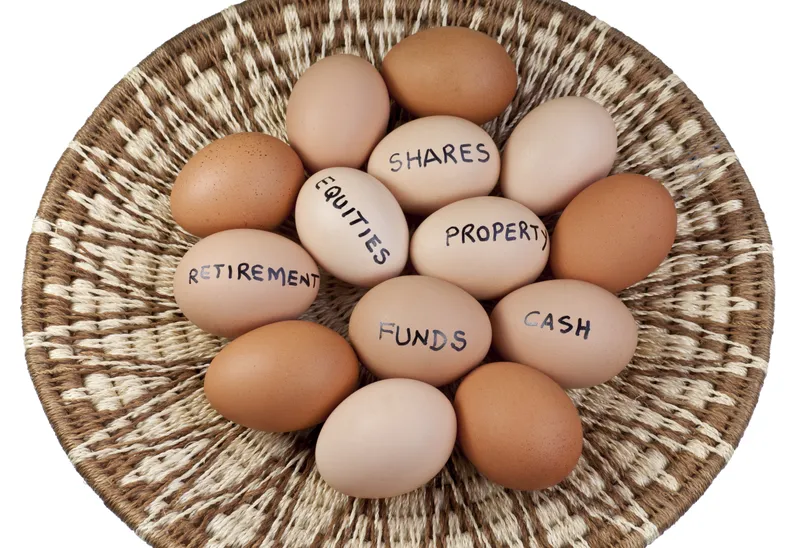Fractional investing is opening up new investment opportunities for the common man. Here’s how
Fractional ownership is the next big wave in investment-tech. It is not only opening up newer avenues for mom and pop investors, but also making instruments previously only accessible by HNIs, affordable.
“For our older generation, the scariest words coming out of young people’s mouths these days are not “I don’t want to get married”; they are, “I am a hobby trader and I love playing the markets,” an investment banker recently told YourStory in an informal conversation.
At the cost of furthering a slight exaggeration, the statement is not inaccurate. There was a time when, for most of India’s middle and upper-middle-income class, fixed deposits and gold was the basic resting pulse when it came to wealth investments. After all, these were instruments of good faith — fixed deposits were guaranteed by banks, and gold, which has historically offered great returns, always has buyers.
Most other investment instruments were seen as “risky” and out of reach for a majority of the population, not just because they depended on a whole set of hard-to-comprehend variables, or were managed by others, but also because their guarantors were untrustworthy. “Who would get me my money back if markets sank?” people asked.
But all that changed when tech-focussed investing platforms came into existence. They taught people how to invest, how markets work, and, more importantly, ways to hedge risk in case one didn’t want to take any
These platforms have done for retail investing what Samsung did for premium smartphones — make something accessible that was out of reach for the masses. And the result of that ease of accessibility has been the massive growth in mom-and-pop investors online.
But now, they’re demanding more.
From derivatives, initial public offerings, foreign exchange, and secondary stock sales, to commercial real estate and sustainable projects, retail investors — aka “Robinhood” investors — want it all. While IPOs and forex are affordable options, the latter aren’t.
Commercial real estate projects run into crores of rupees, and single-handedly managing them isn’t an easy task, especially for novice investors who only seek to make a quick, assured buck. Even small sustainable projects like a solar farm, or a windmills project costs in excess of crores of rupees, which limits people from investing in them.
Enter fractional investing — an implement that offers everyone the opportunity to buy a fragment of a commercial property or a solar farm project, at prices affordable to them.

What is fractional investing?
Imagine you wanted to invest in an office building worth Rs 10 lakh, but did not immediately have all the funds, or did not want to part with a sum that substantial. With fractional investing, you could put in Rs 1 lakh, and own 1/10th of the property — and nine others would do the same. It not only reduces your immediate expense, but also dilutes risk.
Fractional investing isn’t a new concept by any means — timeshare properties, offices, and even cars and airplanes have been used by the upper-income class to own expensive things without:
- Having to pay a huge sum of money upfront.
- Taking too much of financial risk in case things went south.
But in the retail investment world, it’s a relatively new concept — and one that has taken off swiftly with the amount of interest online investing platforms have generated recently.
Fractional investing allows people to pool in the money they can invest to create a large enough corpus to invest in some high-value projects such as commercial real estate, hospitality or sustainability-focused endeavours.
Essentially, they make it easier for the average salary-earning Indian to participate in investments that were only accessible by HNIs.
Considering the fact that most of the instruments being fractionalised today have longer-term investment horizons, i.e., they yield returns after, say, five to eight years, these investments were limited to HNIs, who can afford the luxury of not needing to see immediate returns.
To make these wealth-generating options attractive to mom and pop investors, a lot of platforms are going the extra mile and ensuring only projects that can yield returns quickly — in a year or so — are listed as investment options.
Pyse, a fractional investing platform that allows investors to park their monies in sustainable projects, gets around the long-term investment horizon issue by first getting HNIs to invest large sums of money — in the ballpark of Rs 25 lakh — in projects to get them off the ground and operational, and then opens it up to retail investors, once it’s at an advanced stage and able to yield returns in the short-term.

Pyse estimates that taking that route helps it cut the lock-in period for retail investors to just six months, as opposed to multiple years that a project of that sort would typically take.
Other platforms are doing similar things too — commercial real estate investment platforms, while they don’t guarantee an immediate return on the total corpus, offer dividends from rent collected, for example, helping retail investors see the value in fractional investing.
Benefits of fractional investing
Accessibility: Investment in property or sustainable projects such as electric automobiles typically run into crores of rupees. With fractional investing, which divides this big chunk into small slices, the ticket size decreases, making it more affordable for people in the middle-class income bracket.
Pre-vetted investment options: Trust is often a huge factor when it comes to investing in something like real estate. Factors such as an ability to generate returns, property management, rental deals, etc., affect investor yields. But platforms that offer these options vet these thoroughly in a bid to offer the best deal to their users.
Gurugram-based , which offers fractional investments in real estate, says it uses reputed third parties to evaluate properties it lists on its platform for any encumbrances, as well as provides escrow accounts to safeguard investors’ monies, and digital governance tools to allow investors to continuously monitor their investments.

“When it comes to real estate, there is way too much at stake for things to go wrong. A bad decision can terribly dent your financial goals, setting you back by years, if not decades,” Amit Uppal, Co-founder, Frxnl told YourStory.
Diversification: For a country that is progressively getting out of the fixed-deposits-as-the-most-important-investment-option mindset, the concept of portfolio diversification is a juggernaut that is gathering more and more speed. From mutual funds and bonds, to IPOs and derivatives, new retail investors in India have shown an affinity towards diversification — and fractional ownership is another option.
Because they offer solid returns, real estate fractional ownership has quickly crossed the first mindset hurdle already. And other forms of fractional investment instruments are following.
Is there an appetite for fractional ownership?
Yes, there is.
Case in point: Famous artwork!
In the US, there are several fractional ownership platforms that allow investors to buy parts of a famous painting, in the hope that, someday, its value will appreciate, and higher returns will be realised.
Art aficionados who want to own a Cézanne or a Warhol, but can’t because they run into millions of dollars, have expressed enthusiasm in owning fractions of those pieces — and that has not only upped the value of some of the world’s most famous paintings, but also opened up a whole new asset for investors.
“Fractional investments of alternative asset classes is probably the best way to hedge a retail investor’s portfolio risks. Most, if not all, of these asset classes are market-independent. The predictable cash flows and fixed returns, despite market volatility, is something even fixed deposits can’t provide,” says Kaustubh Padakannaya, Co-founder, Pyse.
“Also, newer retail investors have a huge risk appetite, and they’re open to experimenting with these new products,” he adds.

An Andy Warhol piece at the Museum of Modern Art (MoMA)
Companies that enable fractional investments in real estate, over the last five years, have processed transactions worth nearly Rs 750 crore, according to JLL, a professional services firm that specialises in real estate and investment management.
In the last year alone, they processed transactions worth Rs 350 crore, despite the COVID-19 pandemic.
Even non-fungible tokens (NFT) have seen investor appetite recently, and fractional investing has made it possible for people to own everything, from a tiny part of the world’s first tweet by Jack Dorsey, which sold for $2.9 million, to digital art.
“A majority of young investors aged between 30-50 years in Tier I and Tier II cities are looking at opportunities to invest in Grade A assets with diversified use that offer attractive yield in a short period of time with low risk, high transparency, and are economical and convenient,” the JLL report says — and fractional investments can afford that for such investors.
If not NFTs, which is still developing as an asset class and is mostly limited to memes, digital art, and other crazy stuff on the internet, real estate investing makes for a great fit in the Indian context where property is seen as a stable form of investment — be it residential or commercial. Nearly 80 percent of the average Indian household’s wealth is invested in real estate as the sector enjoys a position of trust that not even equities do.
On average, fractional investments can generate anywhere from 13 percent to 20 percent in returns in five to eight years, based on what the asset is.
The fragmented real estate ownership market in India is anticipated to grow to $5 billion over the next three years as more investors pour into the market. Commercial real estate, specifically, has emerged as a high returns generator, and continued to grow even last year, despite the pandemic. Nearly 25 million square feet of Grade A office spaces was absorbed in 2020, and that number is expected to hit 30 million square feet in 2021.
Some downsides to fractional investing could include delayed returns as real estate project do tend to get delayed for a number of reasons including catastrophic events; a project being cancelled and investment sum refunded to investors if not enough signed up to invest; and operational difficulties as startups that provide these investing platforms, still in their infancy, scale.
Startups that enable fractional ownership in India
In a bid to capitalise on an impending boom in fractionalised investing in India, several startups have popped up over the past few months in India. Some of these include:
Pyse: A platform that enables partial investments in sustainable projects.
Frxnl: A real-estate investment platform.
hBits: A Mumbai-based proptech startup that helps investors invest money into a property.'
: A Bengaluru-based platform that enables investments in pre-leased, grade-A commercial properties such as office spaces, warehouses, etc.
FRACSN: A blockchain-enabled real estate investment platform.
RealX: A blockchain-enabled real estate ecommerce marketplace.
Edited by Megha Reddy











